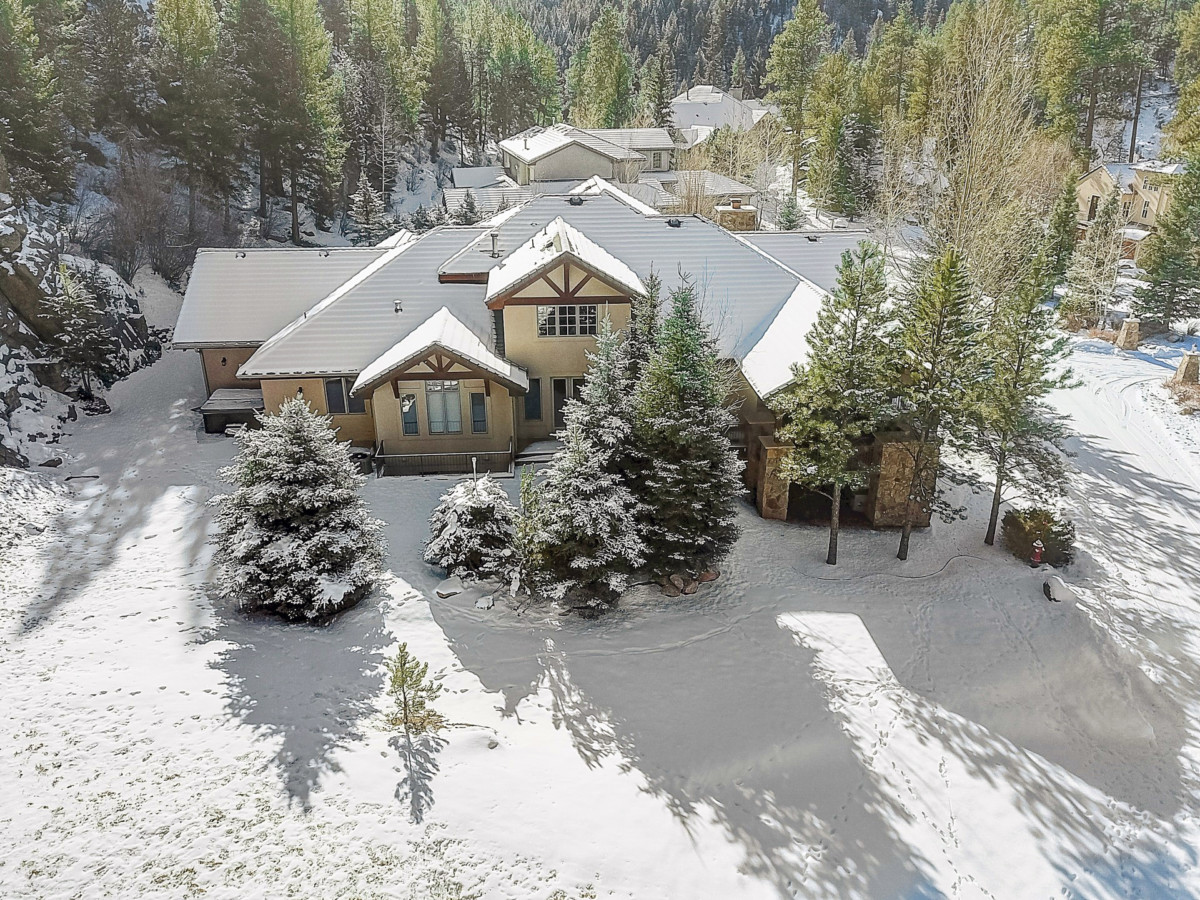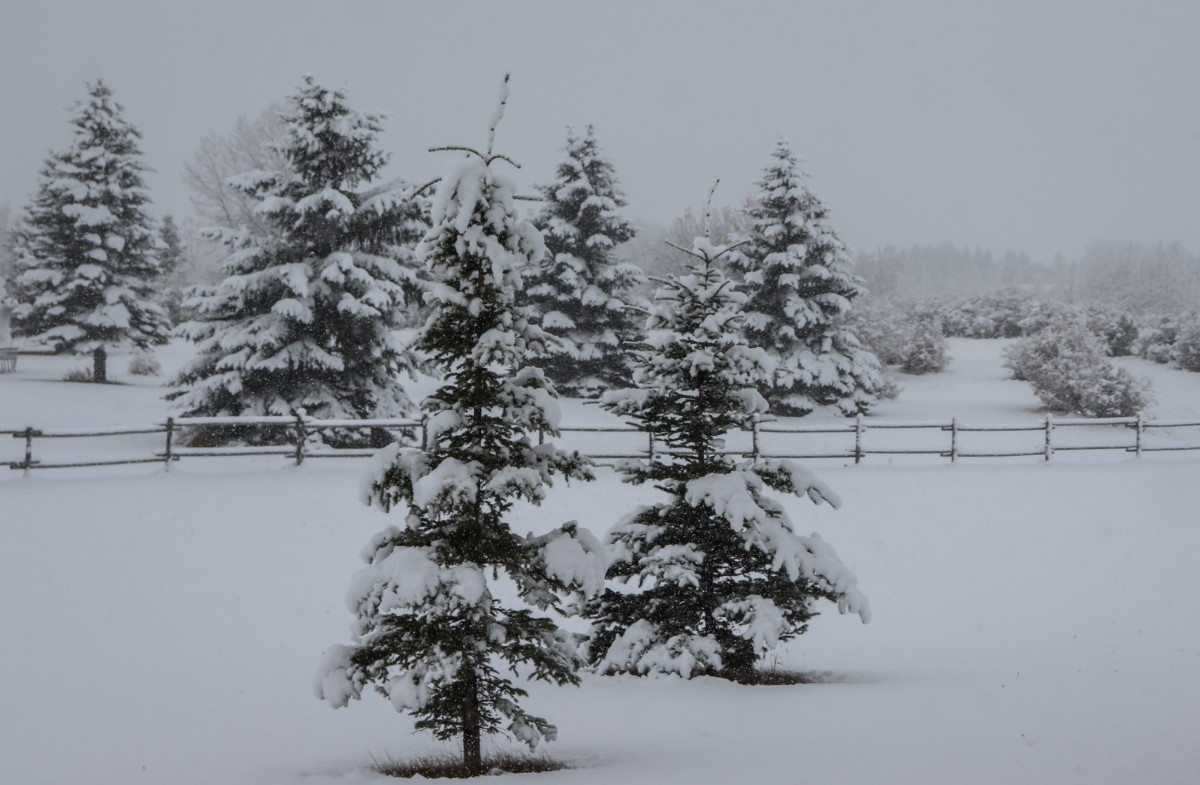What is an Ice Storm and How Do I Prepare for One?
As the temperatures continue to drop and the days grow shorter, it’s only a matter of time until winter is in full swing. Before you break out the fuzzy blankets, crank up the heater, and watch the snow fall from the comfort of the great indoors, you’ll need to prepare your home to withstand any extreme winter weather, including ice storms.
Whether you’re living in a craftsman style house in Boston, MA, or on a sprawling property in Louisville, KY, homes in cold-weather climates may be more susceptible to ice storms. Read on to find out what an ice storm is and how to prepare for one.

What is an ice storm?
An ice storm is caused by an extended period of freezing rain that leaves at least 0.25 inches of ice on the ground. While ice does not fall from the sky, excessive rain between temperatures of 32-38 degrees Fahrenheit (0-3 degrees Celsius) turns to ice as it hits the ground, roofs, cars, and trees. Ice storms can range from mild to severe, but can be dangerous for many reasons.
What damage can an ice storm cause?
While ice storms are particularly dangerous for road conditions, they can also damage your home. The main areas susceptible to ice storm damage are the roof and trees surrounding your property. For example, ice formation on nearby trees may cause branches or the tree itself to collapse onto your home or nearby property lines. This may result in loss of electricity or damage to your home. Roofs are particularly susceptible as ice accumulation may cause roofs to crack or collapse.
How to prepare for an ice storm: 6 steps to follow
Now that you know what an ice storm is, it’s time to learn the steps you can take to protect your home for winter. The following six tips can help you prepare your home for ice storms, snow, and harsh temperatures.

1) Winterize pipes and sprinklers
A critical step to preparing your home for winter is to winterize pipes and sprinklers. Before the first big freeze, make sure to unplug your garden hose from the spigot. Many spigots are designed so they don’t freeze, however, you still have to disconnect the hose to stop ice from forming and breaking the spigot. Consider wrapping your pipes to prevent them from freezing, especially in unused areas like crawlspaces and attics. There are a variety of products you can use including foam rubber sleeves, fiberglass insulation, and heating tape. You’ll also want to seal any leaks in your home that let cold air in, like a drafty window or gap in the wall.
If you own a vacation home that’s going to be vacant over the winter, you have three options to consider. First, you can hire a plumber to winterize your house’s pipes. They’ll shut off the water, drain all pipes, sinks, and toilets, and add antifreeze. Your second option is to leave a small trickle of water running. This creates a constant flow of water that will prevent the pipes from freezing. If you decide to keep a small amount of water running, be sure to clean out your drains or you’re at risk of a flood. Lastly, to prevent freezing pipes, you can leave the heat on at a very low setting so it doesn’t reach below freezing in your house.
If you live in a climate where the frost gets deep into the ground, you’ll need to winterize your sprinkler system as well. Each system varies, but most offer the ability to drain water from the pipes manually, using a valve, or through an automatic controller. You can also blow out the pipes using compressed air, but it’s best to leave that to the professionals.
2) Seal windows, doors, and insulate your garage
Windows and doors tend to let in air unless properly sealed. So another important precaution to take when preparing for an ice storm is to seal the windows and doors in your home. You can do so by picking up an insulation kit or weather stripping at your local hardware store. If you have particularly drafty windows, such as single-pane windows, consider investing in insulated blinds to keep the cold out. When the warmer months return, replacing your windows with a more energy efficient alternative may be a good option.
Not all garages are finished with drywall and insulation, which means the temperature can drop below freezing inside. If you use your garage as a laundry room, storage, or workspace, you’ll want to keep it warm. The best way to prevent your garage from freezing is to finish it with insulation and drywall. For those not proficient in DIY, you may want to hire a contractor for this garage project.
3) Use salt or pellets on steps and walkways
When a major storm is predicted, it’s a good idea to put salt, sand, or deicing pellets on your outdoor stairs and walkways to prevent ice from forming. Note that some cities don’t allow you to use salt, as the runoff can damage wildlife. Be sure to check the regulations in your area before purchasing salt. Another way to prevent an icy porch is to shovel off snow right after a storm before the snow has a chance to melt and turn into ice.
4) Use a snow-melting system on your driveway
If you’re in the process of laying down a driveway or replacing an old one, you can install a snow-melting system underneath. These systems use embedded electric cables or hydronic tubing to heat the driveway and melt the ice. Some systems have timers, while others are activated when the temperature reaches a certain point. While you’ll likely see an increase in your utility bills, it can save you time and energy shoveling snow off your driveway.

5) Cover plants and inspect trees
Covering up plants and flowers before winter sets in can protect them from wind damage, ice, and help prevent the roots from freezing. You can use Styrofoam cone insulators, blankets, tarps, or burlap, which can typically be found in garden centers and hardware stores. Laying down mulch (ground-up leaves or bark) can also act as an insulator. Before the ground freezes, make sure to give your plants and flowers lots of water. You should unwrap the plants in spring, but don’t do it too early as late spring frost could damage your plants.
While you’re working on protecting your plants and garden from freezing temperatures, take this time to scan your property for trees that could fall onto your home or nearby power lines. Even if you don’t live in an area with a risk of ice storms, high winds can make any tree vulnerable. If you notice branches or trees that could cause damage, it’s best to contact a professional who can remove branches or trees before it’s too late.
6) Prevent ice dams on roofs and gutters
While ice dams are not caused by an ice storm, homeowners in cold climates need to be aware of ice dams and how to prevent them. Ice dams occur when snow gathers on your roof and begins to melt from the heating inside your home. The snow slides down the roof until the temperature reaches 32 degrees or below, causing it to refreeze. A barrier of ice forms, trapping water on the roof. As a result, water may seep in-between shingles and seams in the roof, creating cracks that allow water to enter your home.
To prevent ice dams, homeowners have a few options. After a major snowstorm – classified as leaving more than six inches of ice – you can carefully rake off the roof or hire a company to remove the ice for you. Second, take the time to make sure your attic is properly insulated and ventilated. Attics that aren’t properly insulated release heat, melting the ice on the roof leading to the formation of ice dams. Your third option is to install deicing cables on your roof. Deicing cables are heated wires that melt the snow accumulated on your roof. You can have the cables professionally installed, or purchase a DIY kit at a hardware store.
If not cleaned properly, gutters on the roof can exacerbate ice dams. Gutters can trap the ice and water, causing them to bend or break off, further damaging your home’s exterior. Make sure to clean out leaves or other debris that has collected in the gutters before winter.
What else should I consider when preparing for an ice storm?
One important tip to keep in mind when preparing for winter ice storms is ensuring you have an emergency pack. In the case of a prolonged power outage, make sure you have the following at the ready:
- Portable generators
- Blankets, coats, warm clothing, and hand warmers
- MREs (Meal, Ready-to-Eat) and non-perishable foods
- Bottled water
- Portable chargers and extra batteries
- Flashlights and waterproof matches
- First aid kit
- Battery-powered radio
If you need to access your car or driveway, keep the following accessible:
- Shovel and windshield scraper
- Tow and tire chains
- Road salt for melting ice and sand for tire traction
- Battery and jumper cables
- Hazard and other reflectors, such as emergency flares
Preparing your home for ice storms may sound tedious, but as a homeowner, you want to protect your home from potential damage. With some time and effort, you can help your home withstand the winter weather.
The post What is an Ice Storm and How Do I Prepare for One? appeared first on Redfin | Real Estate Tips for Home Buying, Selling & More.
